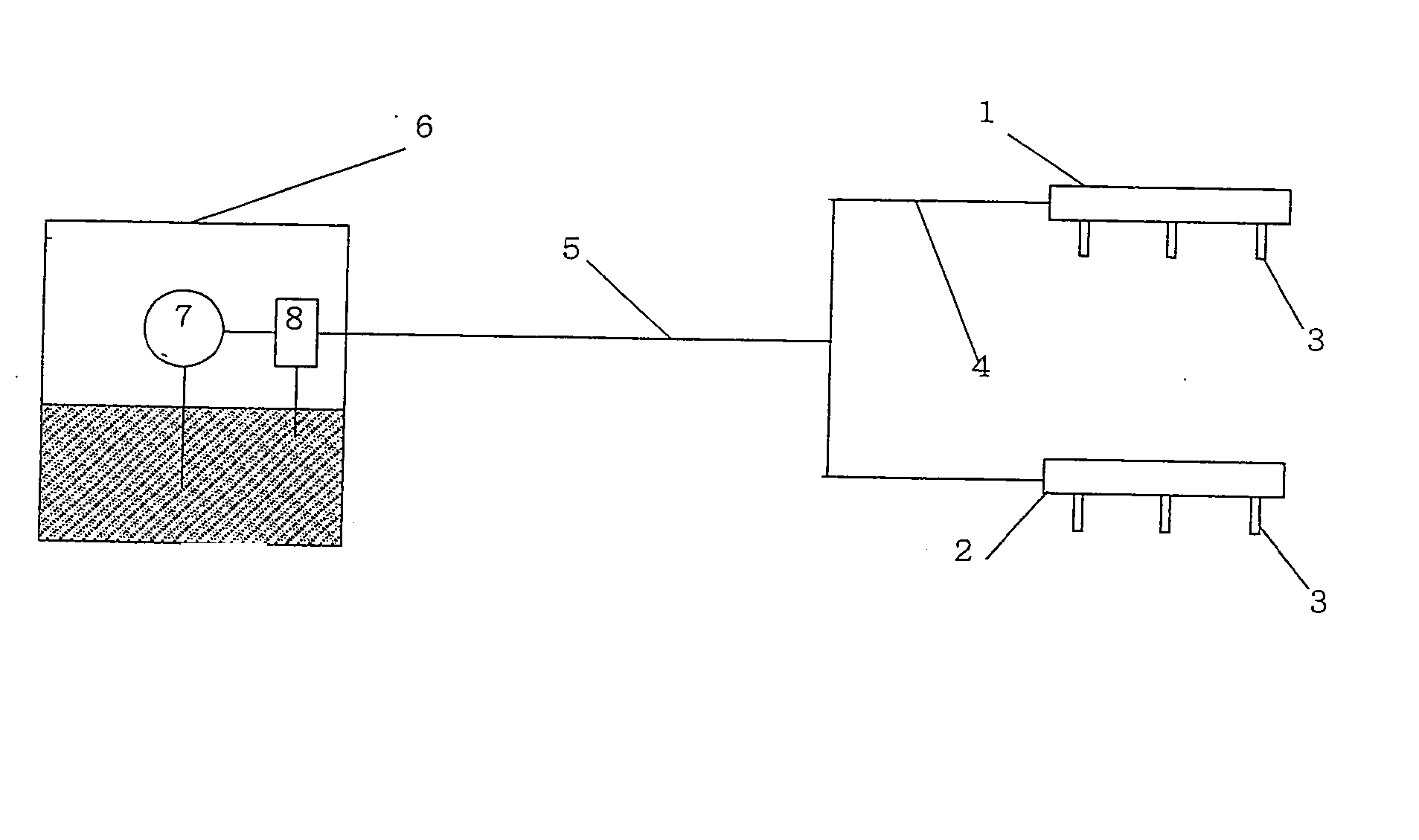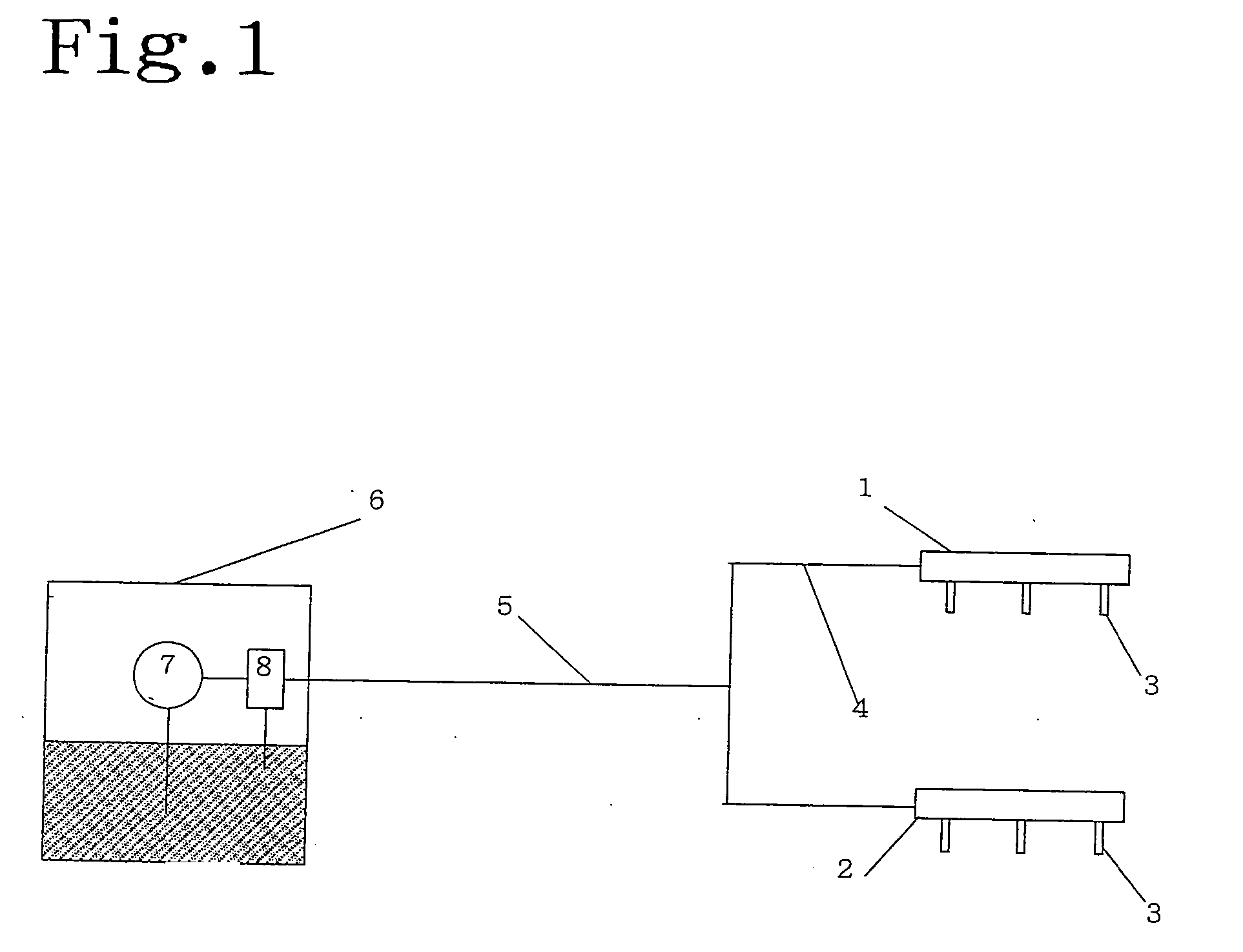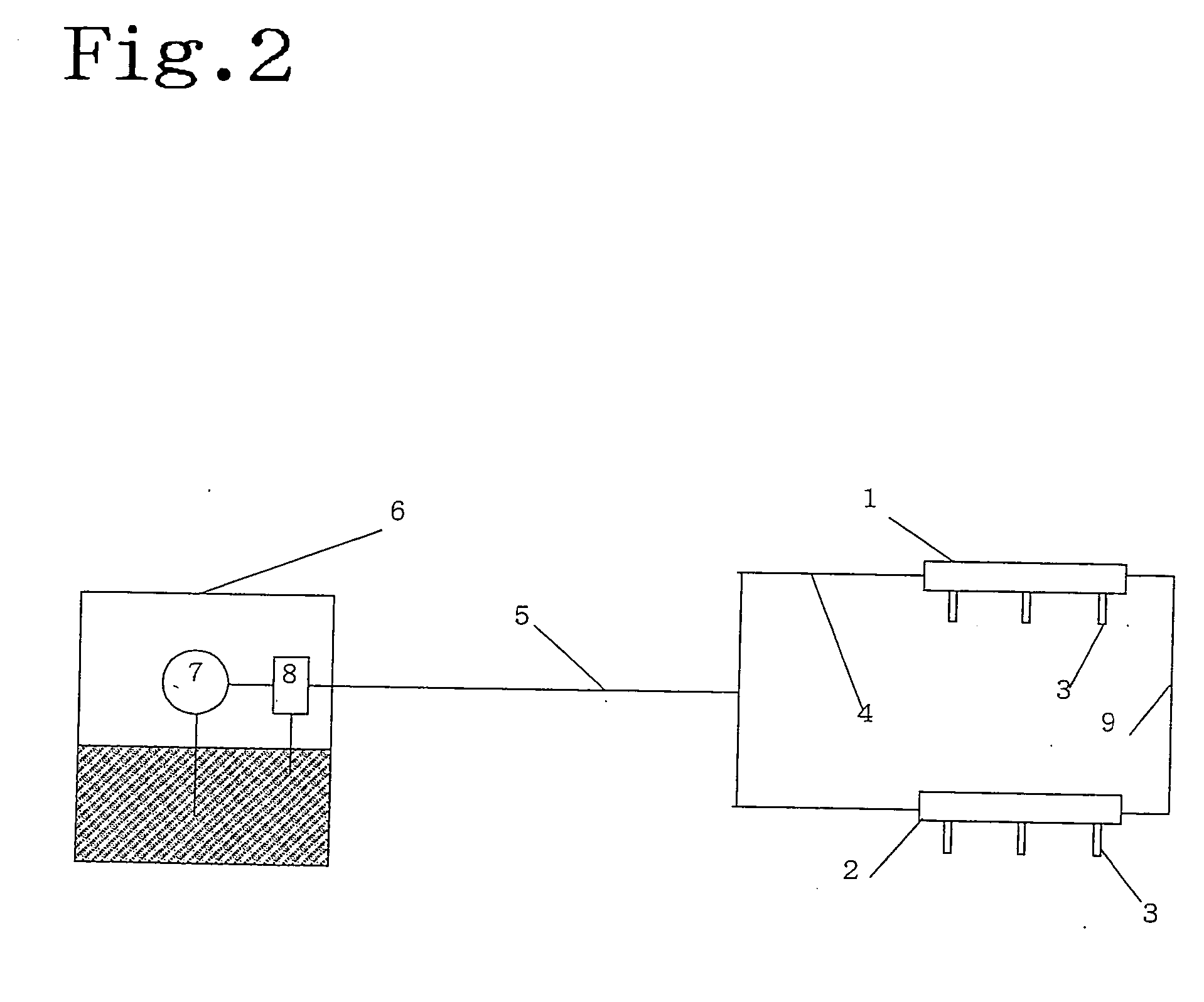Method of controlling pulsation resonance point generating area in opposed engine or in-line engine
a technology of pulsation resonance and opposed engines, which is applied in the direction of liquid fuel feeders, machines/engines, mechanical apparatus, etc., can solve the problems of low propagation rate of pulsation wave in the fuel delivery pipe, increase the temperature of the fuel tank, and increase the temperature of the gasoline, so as to reduce the rigidity of the fuel delivery pipe and improve the absorption ability of the pulsation wave. , the effect of characterizing the period
- Summary
- Abstract
- Description
- Claims
- Application Information
AI Technical Summary
Benefits of technology
Problems solved by technology
Method used
Image
Examples
Embodiment Construction
[0069] Embodiments of the invention are described. Based on a structure at an experiment described with FIG. 15, a description is made. In an opposed type engine, as shown in FIG. 1, injection nozzles (3) are mounted three pieces for each pipe at a pair of fuel delivery pipes (1), (2). The length of the fuel delivery pipes (1), (2) were 315 mm in the experiment. In the experiment, the injection nozzles were opened on the injection side. The pair of the fuel delivery pipes (1), (2) were coupled with a connection pipe (4). The connection pipe (4) was in a cylindrical pipe having an outer diameter of 8 mm and a thickness of 0.7 mm, whose length was of four kinds, 210 mm, 700 mm, 2600 mm, and 3200 mm. An intermediate point of the connection pipe (4) was connected to a supplying pipe (5). The supplying pipe (5) was in a cylindrical pipe having an outer diameter of 8 mm, a thickness of 0.7 mm, in the same way as the connection pipe (4), and a length of 2000 mm. A tip of the supplying pipe...
PUM
 Login to View More
Login to View More Abstract
Description
Claims
Application Information
 Login to View More
Login to View More - R&D
- Intellectual Property
- Life Sciences
- Materials
- Tech Scout
- Unparalleled Data Quality
- Higher Quality Content
- 60% Fewer Hallucinations
Browse by: Latest US Patents, China's latest patents, Technical Efficacy Thesaurus, Application Domain, Technology Topic, Popular Technical Reports.
© 2025 PatSnap. All rights reserved.Legal|Privacy policy|Modern Slavery Act Transparency Statement|Sitemap|About US| Contact US: help@patsnap.com



